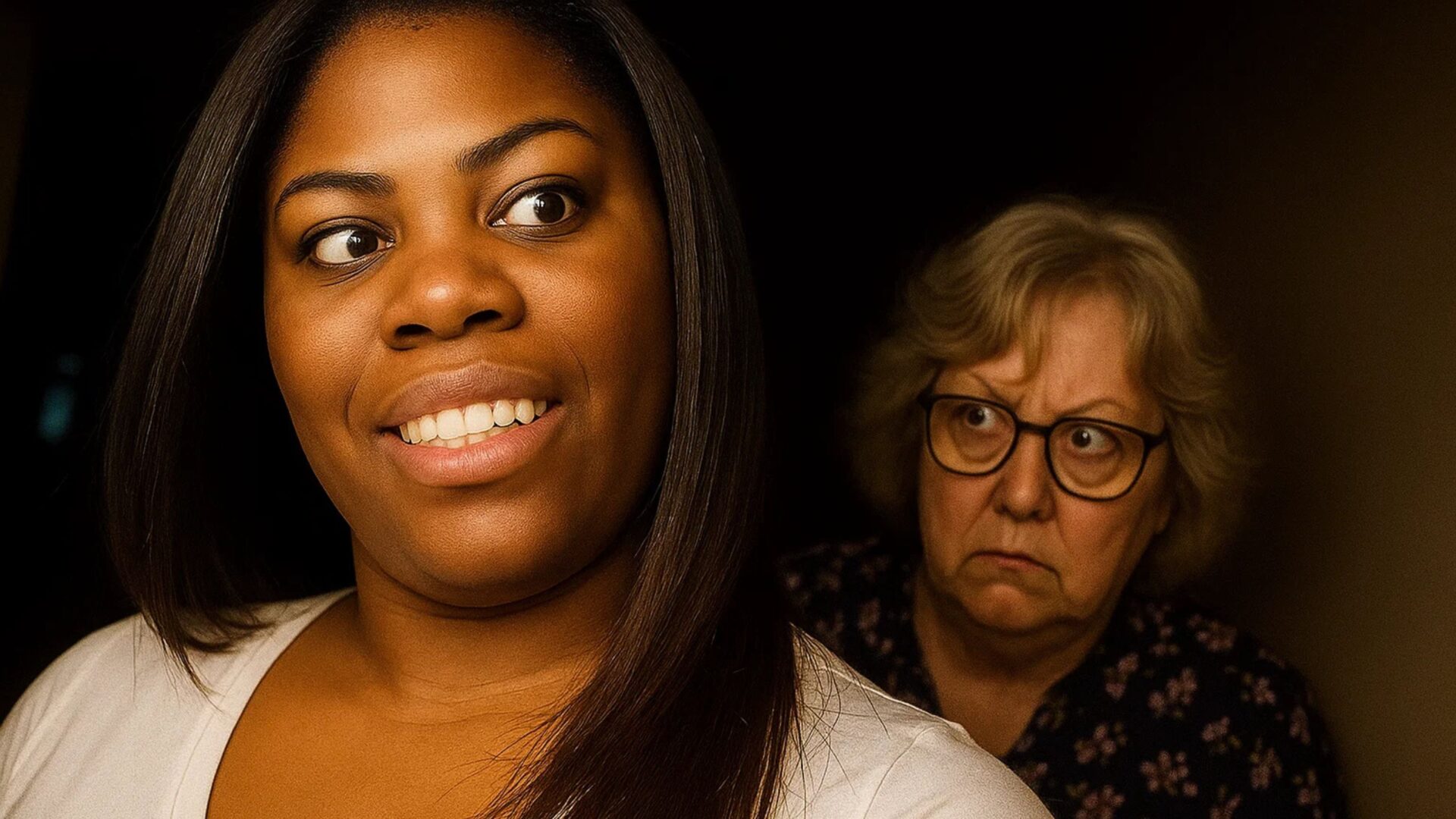Unpacking the Neighbour Phenomenon — Through the Lens of The Perfect Neighbor
The recently-released documentary The Perfect Neighbor (directed by Geeta Gandbhir) follows the tragic killing of Ajike “AJ” Owens by her neighbour Susan Lorincz in a Florida community. The Independent+2TIME+2
What this case illustrates — and what it invites us to consider more broadly — is the dynamic of the “neighbour phenomenon”: the neighbour who knows the environment, whose presence is familiar, yet whose behaviours become controlling or predatory.
Below I’ll explore how this phenomenon plays out psychologically, socially and systemically — using the case as anchor and drawing out wider themes for reflection.
1. The Familiarity Advantage: How Neighbours Know the Environment
In the documentary we see (via body-cam footage, 911 calls and interviews) how Lorincz had become hyper-aware of the children playing in the vacant lot next to her home — their routines, their games, their presence. International Business Times UK+2LADbible+2
Psychological mechanisms at play:
-
Spatial familiarity: The neighbour lives in the locale, knows the front door, the usage of the shared land, the rhythms of comings and goings. This familiarity gives her a vantage point.
-
Observation and surveillance: Lorincz repeatedly called police, filmed children playing, logged complaints. That creates a dynamic of “I see you, I know you, I keep track of you”. TIME+1
-
Own‐territory mindset: When someone lives in a familiar environment, they may feel an enhanced sense of territoriality (“this is mine”, “you are encroaching”). This can set up conflict when others act freely in that space.
From a broader lens: neighbours know the environment in a way outsiders don’t. They hear the noises, see the patterns, feel the disruptions (real or imagined). That gives them power, but also a responsibility — whether they accept that or not becomes crucial.
2. The “Friendly Face” Paradox: When the Good-Neighbour Mask Slips
The title The Perfect Neighbor itself underscores an ironic tension. Lorincz described herself (to police through body-cam footage) as “like the perfect neighbour… you barely ever see me.” LADbible+1
But beneath that amicable façade were:
-
Persistent complaints and racialised harassment of the children in the neighbourhood. International Business Times UK+1
-
Repeated police calls and mounting frustration over trivial behaviours (children playing, roller skates, “trespassing”). REVOLT+1
Psychological insights:
-
Cognitive dissonance: A person labelled (or labelling themselves) as “perfect neighbour” yet acting out hostility creates internal conflict and external bewilderment for the community.
-
Control via proximity: The neighbour’s physical proximity builds opportunity for monitoring, intrusion, and escalation of conflict. What begins as minor annoyance becomes emboldened behaviour.
-
Normalization of escalation: Because this neighbour is familiar, the community and the neighbour themselves may down-play early warning signals (“oh she’s just picky”, “it’s just a kid’s game”) — until the pattern becomes dangerous.
In short: the neighbour phenomenon often hides behind civility, but familiarity can mask deeper aggression or bias.
3. The Escalation Ladder: How a Neighbourly Conflict Becomes Lethal
A key contribution of the documentary is showing the escalation trajectory — how repeated small conflicts can metastasize into tragedy. The steps in this case included:
-
Children playing next to the neighbour’s property → her complaints to police. The Independent+1
-
Personal insults, racial slurs, object-throwing (roller skates) by Lorincz. International Business Times UK
-
911 calls by Lorincz alleging threats, “trespassing”, and fear of attack. TIME+1
-
The fatal moment: AJ Owens goes to knock on Lorincz’s door to address the issue; Lorincz shoots through the locked door. REVOLT+1
From a psychological standpoint:
-
Minor irritations → perceived violations: What started as noise or kids playing becomes framed as a personal threat.
-
Dehumanisation and externalising blame: The neighbour frames the children (and their mother) as aggressors, ignoring their perspective.
-
Use of defensive law or self-defence mindset: Lorincz’s invocation of fear (“I thought she was going to kill me”) is central in the case. TIME+1
-
Absence of de-escalation: Institutions (police, community neighbours) respond to complaints but do not intercept the pattern before fatal violence. The documentary suggests that earlier intervention might have prevented the tragedy. The Independent
Therefore: the neighbour phenomenon can be deceptively incremental — familiarity gives early warning signs, but if left unchecked, the escalation path can be deadly.
4. Social & Cultural Layers: Power, Race, Community Dynamics
This case is not only about one neighbour and one family — it reveals broader social structures.
Key factors:
-
Racial dynamics: Owens was a Black mother of four; Lorincz was a white woman. Reports and affidavits show racial slurs were used. International Business Times UK+1
-
Law and self-defence culture: The Florida “stand your ground” law context looms large. The sense of entitlement to use deadly force under perceived threat references wider debates. The Independent+1
-
Community cohesion vs individual antagonism: The neighbourhood is described in the documentary as a “tight-knit” community before the storm. Neighbours played with each other’s children; families knew one another. netflix.com+1 But one outlier (Lorincz) disrupted that cohesion.
-
Institutional response: Police responded to complaints, but the response lacked an effective strategy to mediate or de-escalate the repeated tensions. The systems in place (911, patrols) treat incidents discretely rather than as patterns. TIME
From a psychological/social lens: the neighbour phenomenon becomes not just about one person’s behaviour, but about how embedded power, bias, community tolerance, and institutional mechanisms interact.
5. The Neighbour Phenomenon: Generalizable Insights for Everyday Life
Based on this case, here are broader psychological themes about neighbours who know the environment and others’ lives — and how they may become problematic:
a) Boundary issues & proximity
When a neighbour knows too much of your routine (kids playing, doors opening, shared spaces), they may feel entitled or vigilant about your behaviour. This creates a dynamic wherein the “observer” neighbour becomes an informal monitor or judge.
b) Surveillance and monitoring
Visible or covert observation (photographing children, calling authorities frequently, logging minutiae) gives the neighbour power but also creates division and fear. It blurs friendly hospitality and intrusive oversight.
c) Escalation through cumulative irritations
Minor issues (noise, children playing, mis‐shared void spaces) can trigger repeated complaints. Over time, the complainer becomes sensitized to any deviation. When the target (children, family) becomes aware of this constant scrutiny, feelings of being watched or controlled may arise.
d) Power imbalance & “knowingness”
The neighbour’s knowledge of the environment (shared vacant lot, proximity, routines) gives them an advantage. They might sense threats or control others’ space — sometimes justified, often not. But the imbalance lies in one person exercising control over shared communal life.
e) Lack of mediation/intervention
What typically prevents neighbour disputes from getting out of hand is early mediation, community communication, and boundary setting. If the “knowing” neighbour’s behaviour is unchecked, escalation becomes more likely.
f) Reputation and identity
Neighbours live in reputations: “good neighbour”, “quiet block”, “children-friendly”, etc. When one person resists or challenges that identity (complains about kids playing, uses law enforcement as tool), the whole neighbourhood dynamic can shift.
6. Psychological Impact on the “Other” Neighbours and Family
The perspective of AJ Owens’ family and neighbours shows profound psychological implications:
-
Children witnessing the escalation from normal playing to deadly conflict will carry trauma — being monitored, labelled, and ultimately losing a mother.
-
Neighbours who felt the community dissolve or feared raising voices because they anticipated retaliation from the vigilant neighbour.
-
The broader community trust breakdown: when a familiar neighbour becomes a source of fear, the safe space of “home” or “street” is undermined.
7. Preventative & Reflective Strategies
How can individuals and communities mitigate the risks inherent in this “neighbour phenomenon”? Some suggestions:
-
Early dialogue: When complaints start, engage in neighbourly conversation rather than immediately escalating to authorities.
-
Shared boundary definitions: Clarify what is shared space (vacant lot, lawn, sidewalk) vs private property. Shared norms reduce conflict.
-
Mediation: If repeated calls or complaints occur, involve neutral third parties (community association, local community mediation service) early.
-
Observation vs interference: Recognise the difference between noticing and controlling. Neighbours should monitor for safety, not impose constant surveillance.
-
Cultural competence & equity: Be aware of how race, class, age, and power dynamics operate in neighbourhood conflicts. The “knowing neighbour” may carry biases or preconceptions that distort their interpretation of others’ behaviour.
-
Institutional responsiveness: Local law enforcement and community services need to interpret repeated complaints as patterns, not isolated events — which may warrant preventative action.
8. Final Thoughts
The documentary The Perfect Neighbor illustrates, in haunting form, how the neighbour who knows the environment can wield intimate power — and how that power, unchecked, can turn fatal. The “perfect neighbour” façade collapses under the weight of control, bias and escalation.
For psychologists, sociologists, and everyday citizens, this case is a stark reminder: familiarity is not always harmless. When someone watches you, records you, calls you out repeatedly, the safety of the neighbourhood can shift into surveillance and fear.
:max_bytes(150000):strip_icc():format(jpeg)/Ajike-Shantrell-Owens-susan-lorincz-101625-e0cfb03d60b04dba8980f188df2a6d3f.jpg)
people.com

theguardian.com

decider.com


